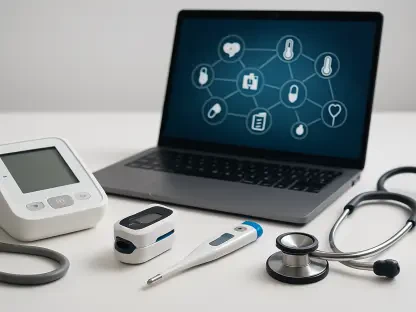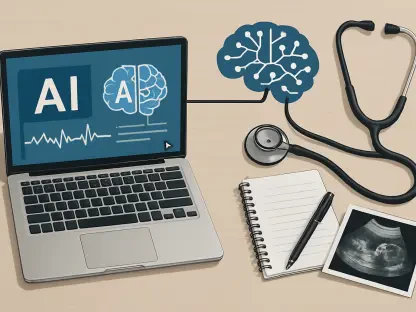In the rapidly evolving landscape of healthcare, the relationship between revenue cycle teams and IT departments has become increasingly critical. Both departments face unique challenges and hold complementary strengths, making their collaboration essential for achieving technological modernization and cost efficiency. By merging their expertise, these teams can foster innovation and streamline operations to navigate the complexities of modern healthcare. This article explores the importance of synergy between these departments and offers insights into overcoming common obstacles, ultimately aiming for a more efficient, technologically advanced, and financially healthy healthcare organization.
The Increasing Pressure on Revenue Cycle Leaders
Revenue cycle leaders are navigating a complex environment marked by diminishing margins and mounting payer challenges. These leaders must find creative solutions to enhance cost efficiency while dealing with financial constraints and fluctuating reimbursement models. The expectation to adopt new technologies adds an additional layer of difficulty, requiring a delicate balance of innovation and practicality. Meanwhile, IT departments juggle the maintenance of secure, stable systems that demand constant upgrades. Their role extends to ensuring the technological backbone of the organization supports all operational aspects seamlessly, emphasizing the need for synchronized efforts between the two teams.
The pressures on revenue cycle leaders include not only the adoption of sophisticated technologies but also managing operational efficiency amidst these financial constraints. This dual challenge often results in revenue cycle teams seeking innovative methods to streamline processes and reduce costs. On the IT side, the constant evolution of technology necessitates ongoing upgrades and rigorous system maintenance to ensure operational stability. These combined pressures underscore the importance of a robust partnership between revenue cycle and IT departments. Only through such collaboration can healthcare organizations efficiently address both technological and financial challenges in a cohesive manner.
The Case for Collaboration
Historically, revenue cycle and IT departments have operated in silos, with minimal interaction. Traditionally, the distinctive technical infrastructure provided by IT did not always align directly with the financial health and process efficiency focus of revenue cycles. However, the increasing complexity of healthcare operations and the necessity for digital transformation have made these isolated efforts archaic. The distinct functions of each team now indicate a critical need for their collaboration, ensuring that technological deployments are practical and financially viable. Coordination between these specialized fields is essential to implement technology solutions effectively and drive mutual success.
Working together, these departments can create synergistic solutions that transcend the limitations of isolated efforts. For instance, revenue cycle teams can offer insight into accurate financial data management and reimbursement models, while IT can streamline these processes through advanced software and systems integration. By bridging the gap between them, healthcare organizations can optimize both financial processes and technological infrastructure, resulting in improved overall efficiency. The era of functioning in silos must give way to a new standard where both revenue cycle and IT departments collaborate closely to achieve shared organizational goals.
Addressing Resource and Expertise Gaps
Both revenue cycle and IT departments often face resource limitations and competing priorities, further complicating their individual and joint efforts toward digital transformation. This scarcity of resources makes it unrealistic for either department to fully grasp the complexities of the other’s domain. Revenue cycle teams require specialized knowledge encompassing claims management, reimbursement processes, and payer behaviors, domains typically outside the expertise of IT professionals. Conversely, the technical skills within IT are generally not present within revenue cycle teams. Therefore, bridging this expertise gap through focused collaboration can lead to more effective technology adoption and stronger financial management rooted in operational efficiency and strategic innovation.
Developing a seamless partnership helps mitigate these resource and expertise constraints. By pooling their knowledge and capabilities, revenue cycle and IT departments can devise comprehensive solutions that leverage the strengths of each discipline. This collaborative approach enables the two departments to navigate complex financial and technological landscapes better, offering a unified strategy for digital transformation. Organizations that successfully harness the combined expertise of these teams are more likely to implement technologies that are both innovative and practical, ultimately leading to a more resilient and agile healthcare system.
Shared Performance Metrics
One potent strategy for aligning the efforts of revenue cycle and IT departments is the introduction of shared performance metrics. These metrics can encapsulate the impact of IT initiatives on revenue cycle efficiency and the role of operational teams in ensuring quality assurance. By measuring and showcasing the benefits of collaboration, these metrics can foster a stronger commitment to organizational goals. When departments are held accountable to shared metrics, it solidifies their partnership and drives mutual accountability, essentially transforming isolated efforts into a cohesive strategy that benefits the entire organization.
Shared performance metrics serve as a common language that both departments can understand and aim for. For instance, metrics might include the efficiency gains from automation, the reduction in claim processing times due to improved software systems, or the effectiveness of cybersecurity measures in protecting financial data. This alignment through shared metrics ensures that both revenue cycle and IT teams are working toward the same objectives, fostering a culture of collaboration and mutual success. By demonstrating the tangible benefits of their joint efforts, organizations can reinforce the value of this partnership and motivate continuous improvement and innovation.
Embedding IT into Revenue Cycle Operations
Embedding IT staff within daily revenue cycle operations can significantly enhance operational knowledge and identify opportunities for automation. IT professionals working closely with revenue cycle teams can create exception-based workflows, preventing redundant or bolt-on solutions that fail to leverage existing capabilities. This close integration ensures that technological solutions are both practical and aligned with operational needs, leading to more tailored and effective implementations. An embedded partnership eliminates the disconnect between the creation and application of technology, ensuring that every solution is rooted in a profound understanding of revenue cycle needs.
This approach not only identifies immediate areas for improvement but also fosters a long-term culture of innovation. As IT staff become more attuned to revenue cycle processes, they can proactively suggest technological advancements that drive operational efficiency and financial health. Embedding IT within revenue cycle operations allows for real-time problem-solving and quicker response times to emerging challenges. This continuous collaboration helps prevent the development of temporary fixes and instead promotes sustainable, scalable solutions that can adapt to the evolving demands of modern healthcare.
Skepticism Towards Vendor Promises
Healthcare organizations are growing increasingly skeptical of vendor promises, often finding their solutions lack proof of concept and distance them from the patient experience. Vendors frequently offer solutions that, while innovative, may not be fully vetted or tailored to an organization’s specific needs. A strong partnership between revenue cycle and IT can mitigate these concerns by enabling strategic explorations rather than relying on last-minute critical decisions. This strategic approach allows organizations to thoroughly vet technologies, ensuring they meet real-world needs and integrate smoothly into existing processes. By jointly evaluating potential solutions, revenue cycle and IT teams can select technologies that truly enhance operational efficiency and align with patient care objectives.
A collaborative scrutiny of vendor offerings ensures that only the most effective and relevant technologies are implemented. This critical evaluation can result in more practical and deployable solutions, reducing the risk of investing in unproven technologies. Furthermore, such strategic decisions can help safeguard the organization’s financial and operational health, enabling better patient care delivery. A united front against vendor promises ensures that technology adoption is both strategic and evidence-based, providing long-term value to the healthcare organization.
The Trend of Outsourcing and Technology Integration
A noticeable trend in healthcare is the increasing reliance on outsourcing and the integration of multiple technologies to achieve modernization goals. This shift amplifies the necessity for a robust IT partnership, as internal resources may struggle to keep pace with these external demands. By working together, revenue cycle and IT teams can ensure these integrations are seamless, reducing the strain on internal staff and leveraging external solutions effectively. This cooperative approach ensures that outsourcing and technology integration efforts are aligned with the organization’s broader goals, maximizing the benefits while minimizing the disruptions typically associated with such transitions.
Outsourcing often involves bringing in external partners who may introduce new technologies or processes unfamiliar to the internal teams. A strong partnership between revenue cycle and IT allows for a smoother transition, with both departments working together to integrate these new solutions into the existing framework seamlessly. This collaborative effort ensures that external resources are utilized effectively and that internal operations continue to function efficiently. By aligning their efforts, revenue cycle and IT teams can navigate the complexities of outsourcing and technology integration, ultimately leading to more robust and scalable healthcare operations.
The Role of Analytics and Development Functions
In today’s fast-changing healthcare environment, the cooperation between revenue cycle teams and IT departments has become more vital than ever. Each department faces its own set of challenges but also brings unique strengths to the table, making their collaboration crucial for technological advancement and cost efficiency. By combining their skills, these teams can drive innovation and streamline processes, helping healthcare organizations manage the complexities of modern medical operations. This article delves into why it’s important for these departments to work together and provides strategies for overcoming common hurdles. The ultimate goal is to create a more efficient, technologically savvy, and financially sound healthcare organization. Working hand-in-hand, revenue cycle and IT teams can turn potential obstacles into opportunities for growth and improvement, ensuring that healthcare facilities can not only survive but thrive in an increasingly competitive landscape. This synergy not only optimizes financial health but also enhances patient care, making it a win-win situation for all stakeholders involved.









